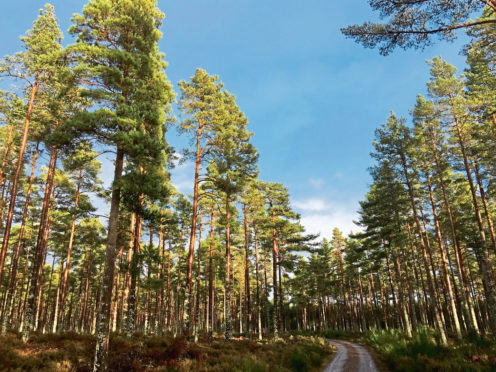Forestry and wood processing employs more than 25,000 people in Scotland and delivers £1 billion of economic value every year.
It is a vital industry in the north and north-east offering a significant opportunity for farmers and landowners to diversify and it is a major employer with a strong record of investment.
Norbord recently invested £145 million in making oriented strand board (OSB) for domestic flooring and roofing at Dalcross, Inverness, while James Jones & Sons has also invested heavily in sites at Aboyne, Mosstodloch, Forres and Kirriemuir, as has BSW at its state-of-the-art mill at Fort William.
John Gordon & Son in Nairn, Cordiners in Banchory, Munro at Dingwall and many more are also leading the green recovery from Covid-19.
Our industry plays a key role because as well as providing jobs and economic growth, trees and timber help mitigate climate change.
Scotland’s ambition to be net-zero by 2045 needs modern forestry, planted to the highest standards, like farmer Ken Greenland’s large new planting scheme in Strath Carnaig, Sutherland. The scheme will soak up almost 50,000 tonnes of carbon dioxide by 2045 – the equivalent to removing 11,000 cars from the road for a year.
We must plant more woods to produce timber. The UK imports 80% of the wood it uses making it the world’s second-largest net importer after China.
With global timber demand estimated to triple by 2050, we need to take responsibility and reduce potential pressure on fragile forests overseas.
Scotland has led the UK in increasing tree planting in recent years and change always brings challenge.
Christopher Nicholson’s recent comment in The Press and Journal raised a number of issues, including criticism of planting trees on deep peat.
It’s important that debate on crucial issues like tackling climate change is based on evidence and fact.
Planting on deep peat is not permitted by the UK Forestry Standard, developed by a wide range of groups to ensure the highest standards in forestry. In the case Christopher highlighted in the Scottish Borders, a very small area was not initially identified as deep peat – when it was, it was very quickly reinstated.
The United Nations Intergovernmental Panel on Climate Change and the UK’s own Committee on Climate Change understand that planting trees is an important means to remove carbon from the atmosphere, as is locking that carbon away in wood products. This is vital if we are to achieve net-zero by 2045 in Scotland.
Modern productive forestry is not just about tackling the climate emergency and providing rural jobs – it can address the nature crisis, too.
That’s why Confor produced its Biodiversity, Forestry and Wood report in 2020, showing that forests planted primarily to produce wood can have significant biodiversity benefits.
In the north of Scotland, it highlighted how species such as red squirrels, sea eagles, hen harriers, capercaillie, Scottish crossbill and many rare insects thrive in productive forests and concluded that nature conservation and timber harvesting can go hand in hand.
Forestry in Scotland is a growing success story, and a visible part of the landscape. Most comments I hear about the negative aspects of tree planting, reflect views from last century.
Forestry in the 21st Century is very different. It has a huge amount to offer as we seek to rebuild an economy ravaged by the pandemic, alongside tackling the growing climate and nature crises.
Our door is open to those who want to know more. Please ask questions and then make up your mind.
- Stuart Goodall is chief executive of forestry and wood trade body Confor.
